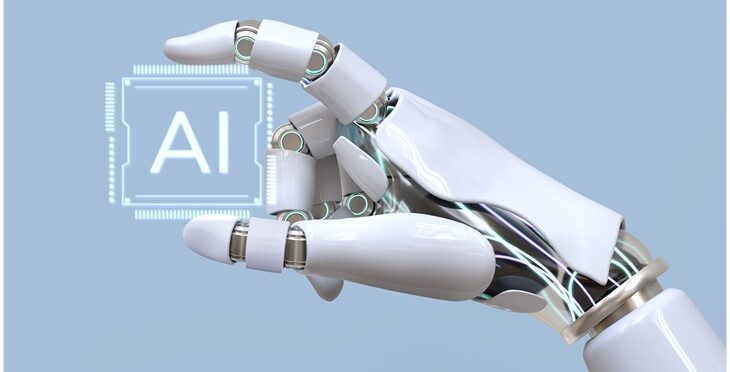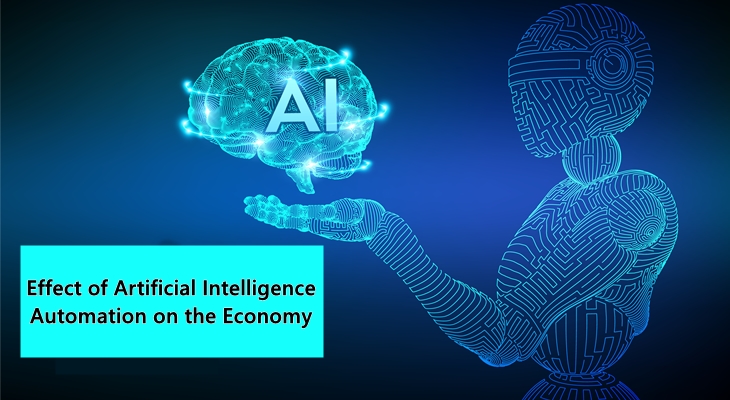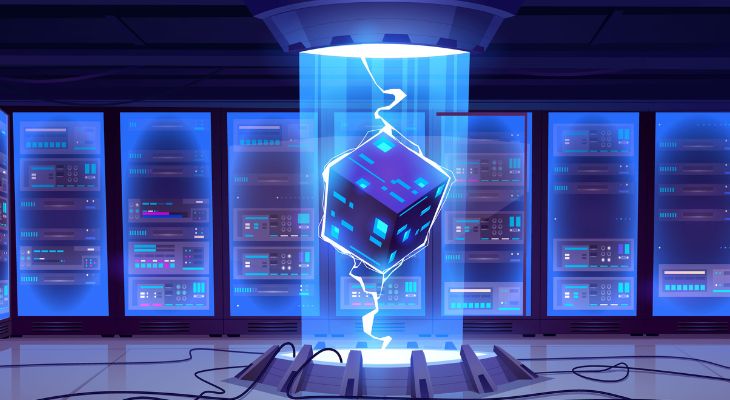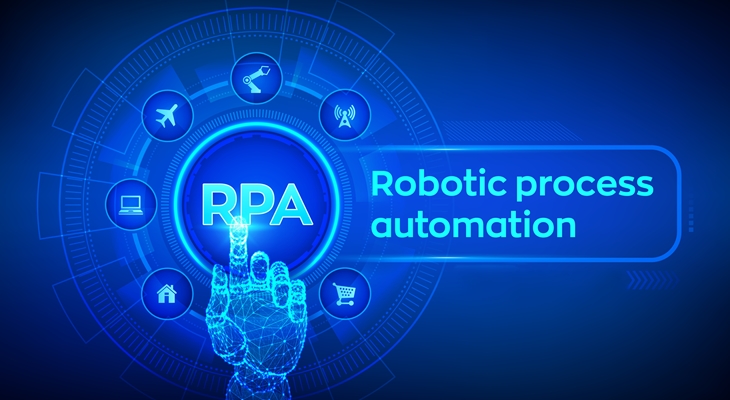AI and neural network in customer-service have been gaining traction for a while. There has been a significant boom in the adoption of AI and neural network in customer-service due to the Covid-19 Pandemic. This blog will go through some of its benefits and challenges.
AI Will be Beneficial to Firms That Interact With Their Clients
AI's ability to predict the future based on consumer data is ideal for omnichannel services. Here consistency and seamlessness of experience are critical.
Consider an e-commerce store that provides omnichannel service. If this business employs AI, it will be able to forecast what the client wants to buy. Thus it will be able to tailor the adverts or product suggestions sent to the various devices or channels.
You must provide the correct information to AI for it to function. Neural networks are one of the most used algorithms in deep learning today. Also, they are gaining huge attention. The application of neural networks relies on the problems that organizations are attempting to solve.
A Neural Network is a Computational System
It consists of a large number of closely connected elements or nodes. Also, it attempts to model the biological nervous system's architecture. It also mimics the information-processing processes of natural neural networks.
Unlike other algorithms, neural networks cannot be explicitly programmed for the task due to their deep learning. They have the same need to learn the material as a new developing brain. The capacity of neural networks to outperform every other ML method is its main benefit.
There are still some obstacles. For example, high performance is critical in cancer diagnosis. The greater the performance, the more patients will get diagnosed.
But, there are some ML problems where a classical approach produces a better result. With neural networks, the problem is the same. A neural network is a formidable piece of modern computer technology. Still, it does have some drawbacks.
Advantages Of AI And Neural Network In Customer-Service
The capacity to foresee brings up new possibilities for applying neural networks in finance. When a network receives a large amount of data, it becomes capable of making predictions. Because it is always learning, its forecasts will get more accurate as each financial study is completed.
Insurance
Insurance firms use various technologies to follow an insured property to detect damage as soon as possible. Customers get divided into categories using a neural network application. This can then be used to create pricing for each customer.
Also, one of the most often used neural network applications in the insurance industry is fraud detection. AI may be able to discern between fraudulent schemes and customers with light fingers.
There is a high level of rivalry in the insurance industry. Neural networks assist organizations in determining why a customer declined their service. As a result, AI will assist businesses in putting together the best program to enhance consumer loyalty.
Telecommunications
The similarities of neural networks in telecoms are not different from those in the insurance industry. For example, AI technology can help to track customer behavior. This helps to determine why they left the company and began utilizing a competitor's services.
Operations Management
Employees in factories can now use corporate apps to make their lives easier and their jobs more productive. Also, machines are becoming outfitted with AI. Today, neural networks help in rolling mills and other assembly lines.
Neural networks improve equipment performance and extend its lifespan. Also, manufacturers use cameras with neural network algorithms to track the manufacturing process. It also helps with optimization, and the detection of defective products, among other things.
Retail
Neural networks are capable of performing multiple tasks at the same time. Its application in retail can be extremely beneficial. Also, AI can deal with a wide range of facts and figures. Neural network projections are far more accurate than those provided by traditional statistics or human specialists.
24/7 Customer Support
Nothing is more aggravating to a consumer than having a critical question and receiving no answers. Especially if the question is about a specific service. Because of the hourly constraints, the customer has to wait for days with no aid in sight.
Chatbots and automated customer support assistance are changing this. Without staff, a database can contain answers to various questions. That suggests your company is always willing to assist others. It may not apply to more unusual or sophisticated difficulties. But, it's a nice catch-all for common problems that callers may encounter.
Reduced Personnel Costs
It is expensive to train call center employees. Bringing on new staff during a crisis can have a significant impact on the bottom line. Thus, any new employee will need time to adjust. This means that the workload will transfer to other members of the team as they learn the ropes. This extra burden slows performance and lowers call quality.
But, as you might expect, an AI chatbot can fill in these gaps. It allows you to maintain essential services while lowering your costs. It also frees up your reps' time and energy to focus on more distinctive, challenging situations.
Reduction In Waiting
When a customer requires support, AI may fill in the gaps. Callers supply their name, address, contact, reference numbers, and other information. AI can collect this data and use predictive approaches to guide the caller to the appropriate solution.
A representative handles these essential inputs, which can lengthen the procedure. But, an AI chatbot takes this information and simplifies the caller's needs to a suitable resolution. Thus resulting in shorter wait times.
Technology Is Changing
There is a risk of losing out on technological advancements and competitive advantages for a modern company. Thus, AI in customer service in the future. It can respond to consumer inquiries in a relevant manner as a developing tech. In its current form, it is considered reactive.
Early adopters discover that their chatbots are capable of answering more complicated inquiries. In some cases, even predicting the type of queries asked based on caller data. It's still a developing technology, but, it's likely to become more ubiquitous.
Messaging Apps Are Widely Used
You don't have to limit yourself to voice AI. Chatbots for customer support plays an important part in addressing questions. This is the case because of the proliferation of social networking apps and texting.
That means a person is more likely to seek help via text/chat than a phone call. AI chatbots can provide a whole new level of service to this statistic. Thus enhancing overall corporate productivity.
Disadvantages of AI And Neural Network In Customer-Service
Black Box
A neural network's worst flaw is that it's a black box. Neural networks have the potential to approximate any function and study its structure. But, it does not give out any insights into it. Thus, human-interpretable elements are required for determining the reason for the error. This is significant since interpretability is necessary for some sectors.
It is the prime reason why most banks don't use neural networks to forecast a person’s creditworthiness. They do so because they'd have to explain why they didn't get the loan if they didn't. Also, the individual could feel unfairly treated if they didn't.
Time Taken To Build A Network
Libraries such as Keras, make developing neural networks simple. Developers sometimes need more control over the algorithm's intricacies. In such instances, they may use Tensorflow. It offers more possibilities but is also more complicated and time-consuming to develop. With standard CPUs, training a neural network is also time-consuming.
Data Volume
Traditional ML methods don't need as much data as neural networks do. Neural networks can perform with a minimal quantity of input in some circumstances. But they don't do so in the majority of cases. In this scenario, many simple algorithms might be a better choice.
These algorithms, such as naive Bayes, work well with little amounts of data. Also, neural networks rely on training data. This leads to overfitting and generalization issues.
Inadequate Escalation
We've gone through the key advantages of context-aware AI. Many firms are still a long way away from that level of improvement. AI is still limited in scope, despite its breakthroughs. When trying to sort through basic AI help alternatives, especially chatbots, customers with specific difficulties may run into challenges.
Interaction Between Machines
There's a reason why so many people despise automated calls. While they can help with fundamental issues, they may not be able to address the whole extent of a caller's complaint. Given that callers need help for a variety of reasons, it's not unusual for them to get frustrated or angry.
Human representatives are more soothing than machine and AI responses. This can compound the situation.
Maintenance And Costs
AI chatbots and AI-driven customer service are complex. Proper administration necessitates the use of trained personnel. Bot installation, creation, and "education" need careful data handling. This needs the staff or partners with specialized skill sets.
Relying on the expertise of specialized people and the upkeep of chatbots and AI services is costly. When using third-party services for the service, this capital might sometimes skyrocket.
Conclusion
One area where AI is presently applied and impacted is customer support. It's applied in various ways to cut customer service costs in businesses like fast food, banking, insurance, and retail.
Major corporations believe that AI-integrated chatbots and voice-activated systems can fulfill low-level queries. It would result in a substantial investment.
This implies that companies will be able to give the same level of service for less money. But it does not mean that all companies would be able to spend less on customer care.
The most significant consequence of AI in customer service is a drop in total spending on customer service across businesses. It also causes a quality improvement arms race for others while spending the same amount.
You may also like to read:
Understanding AI as a Service Examples Across Industries
Effect Of Artificial Intelligence As A Service: Service Industry in Focus
What Is Machine Learning As A Service: List Of Best MLaaS Platforms





